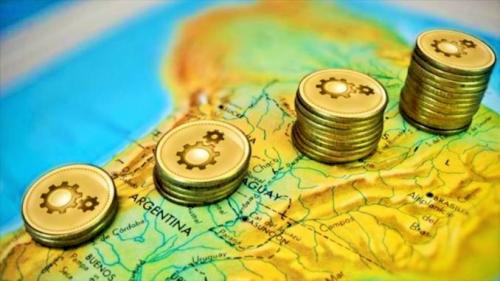Growth prospects in the Latin American economies
Economic performance is influenced by previous growth, restrictions to prevent the spread of Covid-19 and proactive fiscal and monetary policies.
- Opinión

The countries that made the greatest restoration during the third quarter of 2020 are those that will continue to grow in 2021. Economic performance is influenced by previous growth, restrictions to prevent the spread of Covid-19 and proactive fiscal and monetary policies. Transfers and remittances to vulnerable groups were equally vital. We will present the estimated improvements during the third quarter of 2020, from years of lost production, the GDP growth expected by the Economic Commission for Latin America and the Caribbean (ECLAC) for 2021, finally the type of arrangements implemented by countries, focusing on those with the best performance.
Among the selected countries, Costa Rica, Argentina, Jamaica, Ecuador and Chile experienced problems of outflows of large companies, social unrest, dependence on the oil sector and tourism, and are therefore the countries with the least reinstatements during the third quarter of 2020. Mexico bounced back by just under half its lost production, with the best performance among those least embettered. Those that improved the most are Brazil, Nicaragua, Colombia and Peru. We will show the policies implemented by the latter.
In Brazil, the central government did not apply restrictions to mobility; however, state and municipal governments implemented limitations on the opening of businesses and the number of people in public spaces. The Federal Government made transfers to about 66 million people for an amount of almost USD 120 per month from April to August and USD 60 until December. It also suspended tax payments and promoted the expansion of credit for micro and small businesses (17% of its GDP). Despite falling by 0.5% annually from 2015 to 2019, Brazil took the ten years lost in the first half of the year with the largest bounce among the selected countries.
In Nicaragua, there were no restrictions on activity or mobility by the authorities, but the population took precautionary measures, so there was a contraction in domestic demand. Remittances increased by about 10% from January to October compared with 2019, giving families liquidity. During the third quarter of 2020, six of the seven years lost were replaced. The sectors that grew the most were: trade, construction and agriculture; while its future will depend from these sectors and from mining. Nicaragua grew at a rate of 1.2% per year from 2015 to 2019 and is the second most successful country among those selected.
In Colombia, the government implemented higher consumption and investment spending (4% of GDP). During the third quarter of 2020, the sectors with the greatest resumptions were: agriculture, real estate and financial activities, which made up for five of the six years lost. Colombia grew 2.4% annually between 2015 and 2019.
Peru implemented a strict quarantine for several months. The government made transfers to households through two universal bonuses during the year and subsidies to companies (15.8% of GDP). In the third quarter of 2020, the construction sector returned to pre-crisis levels, and the mining, manufacturing and trade sectors resumed eight of the ten years of lost production.
The 2021 return will be enough to even increase production in Guyana, Guatemala and Paraguay. With the exception of Chile and Costa Rica, all the countries maintain the growth of the first bounce back in 2021.
The Central American country introduced measures of physical distancing, restriction of working hours in the manufacturing, commercial and tourism sectors. The government implemented an expansion of current spending on social programmes through the Public Calamity Decree. The flow of remittances increased, providing liquidity to families. In Paraguay, the government reduced value added tax (VAT) and allowed tax deferrals. It increased spending by raising salaries for public officials, hiring health personnel and providing social benefits for vulnerable populations.
The main risks to be faced in the 2021 upgrade are: the evolution of the pandemic and vaccine availability; premature withdrawal of fiscal and monetary stimulus measures; global financial conditions allowing access to cheap financing; and the upward trend in commodity prices. If US interest rates rise, commodity prices will fall.
The data show that the first improvement was influenced by the previous growth of the economies, the type of strategies implemented to avoid the contagion of Covid-19 and the type of fiscal and monetary arrangements to avoid a further fall. In many cases it helped the strength of the improvement to provide liquidity to the most vulnerable groups, through money transfers and remittances.
Num.2, Year 2021, January 22th
- Jorge Zavaleta, Faculty of Economics, UNAM, member of obela.org
.- OBELA: Oscar Ugarteche (Coord), Armando Negrete, Carlos de León, Arturo Martínez, Bertín Acosta, Priscila Martínez, Hiromi Ijima.
Del mismo autor
- Remittances and maquilas, the case of Central America 18/03/2021
- Remesas y maquila, sostén de Centroamérica 18/03/2021
- Growth prospects in the Latin American economies 26/01/2021
- Perspectivas de crecimiento en las economías latinoamericanas 26/01/2021
- The impact of the pandemic on the Latin American economy 01/11/2020
- El impacto de la pandemia en la economía latinoamericana 01/11/2020
- The impact of COVID on remittances in Mesoamerica 07/10/2020
- El impacto del COVID en las remesas de Mesoamérica 07/10/2020
- How the pandemic is going in the world economy: First half of 2020 21/08/2020
- Cómo va la pandemia en la economía mundial: Primer semestre del 2020 21/08/2020
Clasificado en
Clasificado en:
Crisis Económica
- Geraldina Colotti 07/04/2022
- Julio C. Gambina 07/04/2022
- Rafael Bautista S. 06/04/2022
- Julio Gambina 04/04/2022
- José Ramón Cabañas Rodríguez 01/04/2022
Poscovid19
- Alastair Crooke 11/01/2022
- Michael Roberts 03/01/2022
- Armando Negrete 24/08/2021
- Armando Negrete 24/08/2021
- Boaventura de Sousa Santos 27/07/2021








